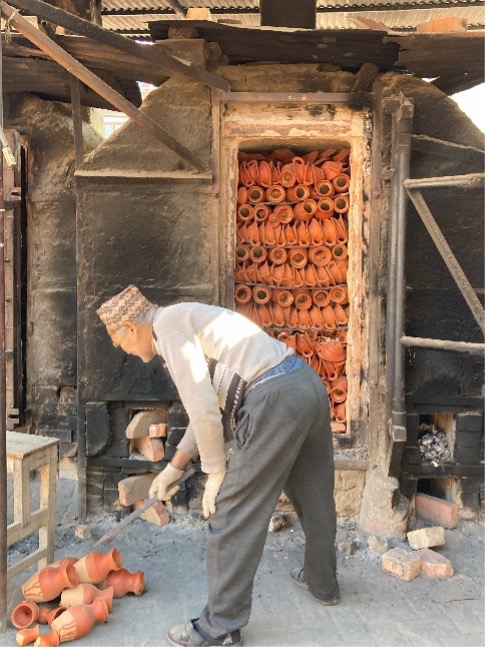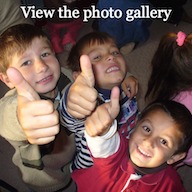Lora Nafziger
This year for Christmas, Mitch and I embarked on a different kind of milestone. Instead of being the ones that travelled “home” to our families, our young adult sons travelled to a new home here in Kathmandu to celebrate Christmas with us and their younger brothers.
Our older sons are studying at universities in Canada. It was strange for them to fly around the world instead of back to the Midwest United States where we had been living. They noted though, that our house here in Kathmandu felt homey, the Christmas activities we did together were enjoyable, and being together as a family made it feel like “home.”
As the other four of us (our two younger sons, my spouse and I) have been living in Kathmandu for a year already, we had favourite places that we wanted to take them, sights to see and food to eat. We took them to Bhaktapur. Bhaktapur is one of the three main cities in the Kathmandu Valley, along with Kathmandu and Lalitpur. It is 13 kilometers from Kathmandu, but with urban sprawl and the rate of construction, it is hard to tell where each of these cities ends and another begins.
Bhaktapur is a UNSECO World Heritage site, and its designation in 1979 helped with development and infrastructure. It is a city known for its Newar tradition, cuisine and artisans. Newar people are native to the Kathmandu Valley and many of our coworkers come from this ethnic group. The Newar people are one of 142 ethnic groups, and 123 languages, in Nepal.

Photo Credit: Lora Nafziger
Bhaktapur Potter At Work
Bhaktapur is known for the music and dance that happens there as part of the annual festival Gai Jatra (we hope to go sometime). It is also famous for a type of yoghurt made from buffalo milk that we love to get as a treat when we visit. Bhaktapur is well known for its potters, and the boys had a chance to try out their skills while we visited this time.
In addition to visiting this local site, we travelled together to India. This was an amazing trip that my sister, who also lives in Nepal with her family and works for a different Christian development organization, had dreamed about and planned for. We were gifted with this trip as a Christmas gift from all the boys’ grandparents (my parents and in-laws). When we talked with our youngest about going to India as a Christmas gift, he said, “I don’t want to go to India, I want Lego.” At the end of the trip to India AND now one Lego set richer, he would agree that going to India with ALL his brothers and his cousins was a pretty great gift.
Our time in India interestingly led to a lot of reflections on our first year in Nepal. We compared the architecture, the poverty, the parks and green spaces, and the roads. The boys considered what they love about Kathmandu as compared to Dehli and what in Dehli was appealing (more green space and smooth roads!).
We talked about the size difference between the countries, and the way that all the organizations we know in Nepal that work towards good education, gender equality and climate justice, likely exist in India too. We looked up organizations that work with street kids in India to donate to these, rather than giving to the children who were so persistent in asking on the street, in much the same way we do in Nepal.
I think we were not “normal” North American-travelling-to-India tourists in many ways. For instance, our children had the analysis and awareness that “some grown-up was probably taking all the money we would give to the kids anyway.” In Asia, as human trafficking continues to be a significant problem I am grateful that through experiences like this, and in Kathmandu, my children are learning age-appropriate understandings of injustice in the world. Our 14-year-old went with his class to one of the major tourist sites in Kathmandu, the Boudnath Stupa, to draw images of it for art class, to learn history from local businesses, and then volunteer for an afternoon with an organization that works with street children.
My niece, who also lives here, was recently reflecting on how many people she knows in the world who make the world a better place. She smiled as she considered all the people and organizations she knows and said, “Probably at this rate, the world will be better, and soon. Like 10 years, I think.”
It is hope like this that keeps us doing our work. It is hope like this that makes us glad to share this part of the world with our children. It is hope like this that you join when you support Presbyterians Sharing. It is hope like this that we celebrate when we name the vulnerability of the Christ Child.
Note:
This update from Lora is in response to a query from the editor of The Presbyterian Message, a publication of the Atlantic Mission Society (AMS), to share something of their family life in Nepal and how their children are adjusting to their new life there. It was published in the March—April 2025 issue of The Presbyterian Message.


